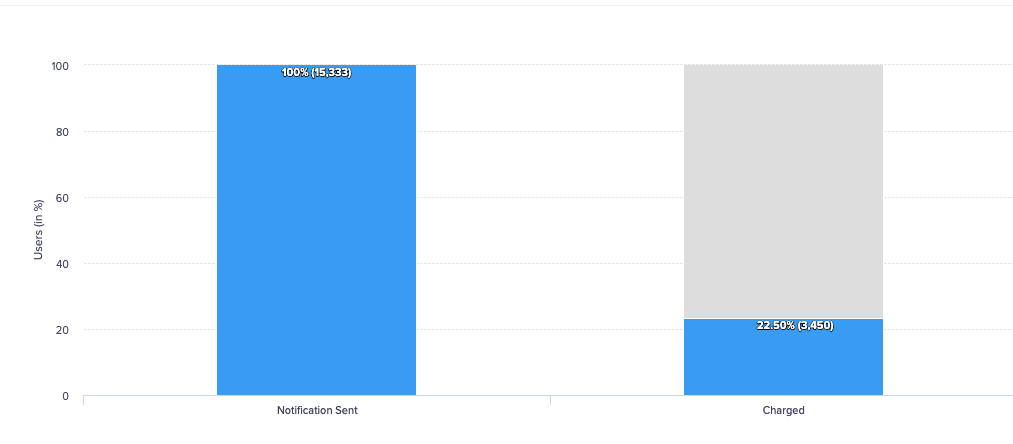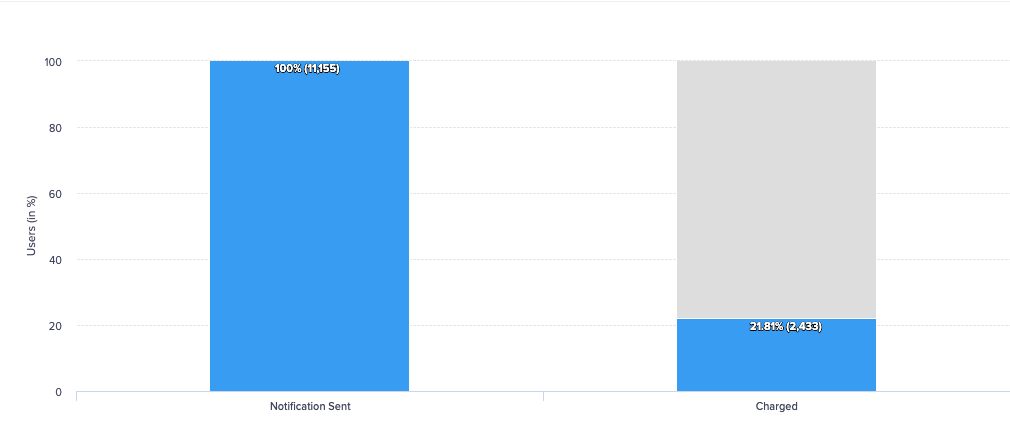Effective messaging campaigns are an important part of a successful customer engagement and retention strategy. They include multiple elements such as orchestrating framework for cross-channel communication, engaging content, and so on.
The budget for the number of messages that a user receives is also an important element in the messaging strategy. However, setting an optimal budget for number of messages is not that trivial and in many cases it is still an unanswered question.
Why Should You Set a Budget For Messages?
The cheapest form of messaging is a push notification. Technically, one can send a user an unlimited number of push notifications. However, this strategy can quickly turn user experience into user fatigue. The challenge is knowing the number of messages that a user is willing to accept without uninstalling your app.
Experimentation
Many martech tools enable marketers to effectively run A/B tests. As an astute marketer, you may have experimented with messages to find that golden number where you don’t see user fatigue setting in.
Let’s take an example. After multiple experiments, you conclude that the ideal number of messages to be sent per day per user is 2. However, does this mean every user engages with your app every day? The engagement, transactional or conversion behavior among users need not correlate with the messaging cadence. It could be that users engage/transact biweekly, weekly, or even less on average. However, your messaging strategy does not change even though we know that there is no direct correlation between engagement and messaging budget.
The Problem with Averages
The biggest problem in this approach is relying on averages. Averages tend to hide more than they reveal.
Suppose a drive to the nearest countryside takes 2 hours and the distance to be covered is 100 miles. So the average speed is 50 miles per hour (mph). But does it mean 50 mph is the speed throughout the journey? Absolutely not, because the speed could be 20 mph in the city and 80 mph on the highways. We clearly know when to accelerate and decelerate.
The average hides so much detail about speed for a single person. How about deriving an insight from average speed for an entire city or country?
Instead of setting a global average of messages per user, it would be better to make it more adaptable to user preference, which in itself is ever changing or temporal in nature.
To achieve this, we should first understand the intent of the user based on the data. Then you can decide how to effectively communicate with the user to fulfill their needs.
Enter Dynamic F-Caps
Before we start defining F-Caps (upper limit on the number of messages received by a user), let’s check whether communicating with users leads to transactions. The example discussed below is of a food tech app that sends 3 messages daily to its user base.
Funnel (A) gives the funnel analysis of Notification Sent —> Charged for all the users on October 5.
Funnel (B) also gives the same funnel analysis of Notification Sent —> Charged but only for users who have transacted at least once on October 5th.
The conversion time for both funnels is 30 minutes.

Funnel A tells us that 0.3% of the users who are engaged with a campaign end up transacting within 30 minutes.
Funnel B tells us that 22.50% of the users who are engaged with a campaign end up transacting within 30 minutes.
Funnel (B) engagement is more than 70x better in comparison to Funnel (A)! From the above comparison, we can conclude that notifications or communication with the user is more effective when the user has a clear intent of converting.
Let’s do some further analysis on users who haven’t transacted a day earlier but came back to transact the next day.
The above funnel is similar to the earlier ones but it excludes users who didn’t transact on October 4. What the above funnel reinforces is that the messages sent to the user base a day earlier yielded nothing. However, over 21% of users ended up transacting the next day after receiving the messages.
What is so different between the 2 days?
‘Content’ and ‘Context’ go hand-in-hand. Even though an app might have the best recommendation system serving the best product (content), if it does not have proper context, the engagement is bound to suffer.
A sentence like “I am refusing this date” could be interpreted in several different ways:
- A person refusing a romantic overture?
- A judge arguing with a lawyer?
- Or something else?
Without understanding the context, it is difficult to make sense of the sentence and continue the conversation.
Coming back to our example, what could be the cause for the difference between the 2 days?
The BIG answer is the underlying INTENT to transact or the context.
The BIG question is how to identify INTENT.
Intent to Convert
Let’s for a moment assume that we have the ability to identify the intent of a user. Would the interaction with the user be different because we are armed with this information? Should we continue the strategy of sending a constant number of messages… or adapt to a more dynamic approach as per the user’s intent?
Intent Based Segmentation
To identify intent, CleverTap has feature enabled by machine learning called Intent Based Segmentation (IBS). It buckets users into micro-segments based on their intent:
- Most Likely to convert
- Moderately Likely to convert
- Least Likely to convert
This feature enables a marketer to capture the temporal intent, or the intent to convert within a specified time frame.
In this 20-minute talk I explain Intent Based Segmentation in detail.
Experiment
Armed with this information, we can now set up experiments to understand the ideal number of messages for each micro-segment. Suppose, after experimenting, we discover that the ideal number of messages per day per user (and per micro-segment) is:
- Most Likely = 2
- Moderately Likely = 3
- Least Likely = 1
The intent of a user is not constant but constantly changing. Even though the budget of messages per day for each micro-segment is fixed, the overall number of messages received by 2 users could be very different.
With this approach, you can:
- Discover the ideal number of messages for each micro-segment
- Create a Dynamic F-Cap per user
- Maintain the overall messaging budget at the company level
Key Takeaway
In this blog, we learnt that:
- Relying on a global average of messages per user per day is inefficient
- Capturing the intent of a user is the key to communicating effectively with them
- Setting the dynamic frequency cap based on the intent of the user is an optimal strategy

See how today’s top brands use CleverTap to drive long-term growth and retention
Jacob Joseph 
Heads Data Science.Expert in AI, Data & Analytics and awarded 40 under 40 Data Scientists in India.
Free Customer Engagement Guides
Join our newsletter for actionable tips and proven strategies to grow your business and engage your customers.


















































